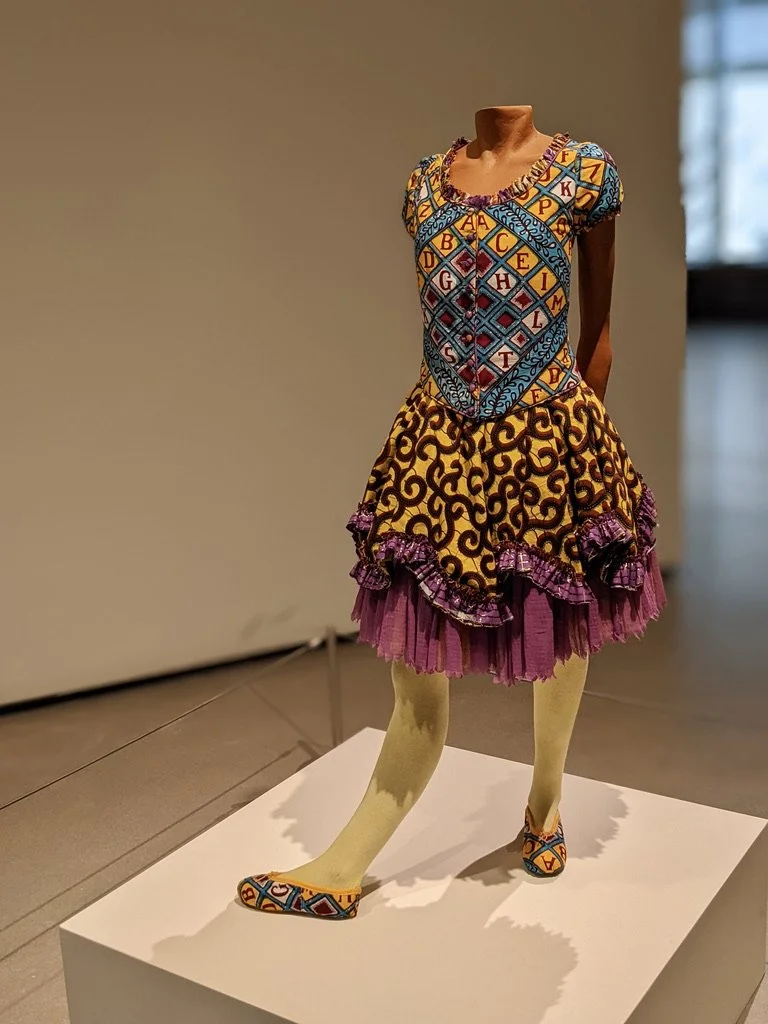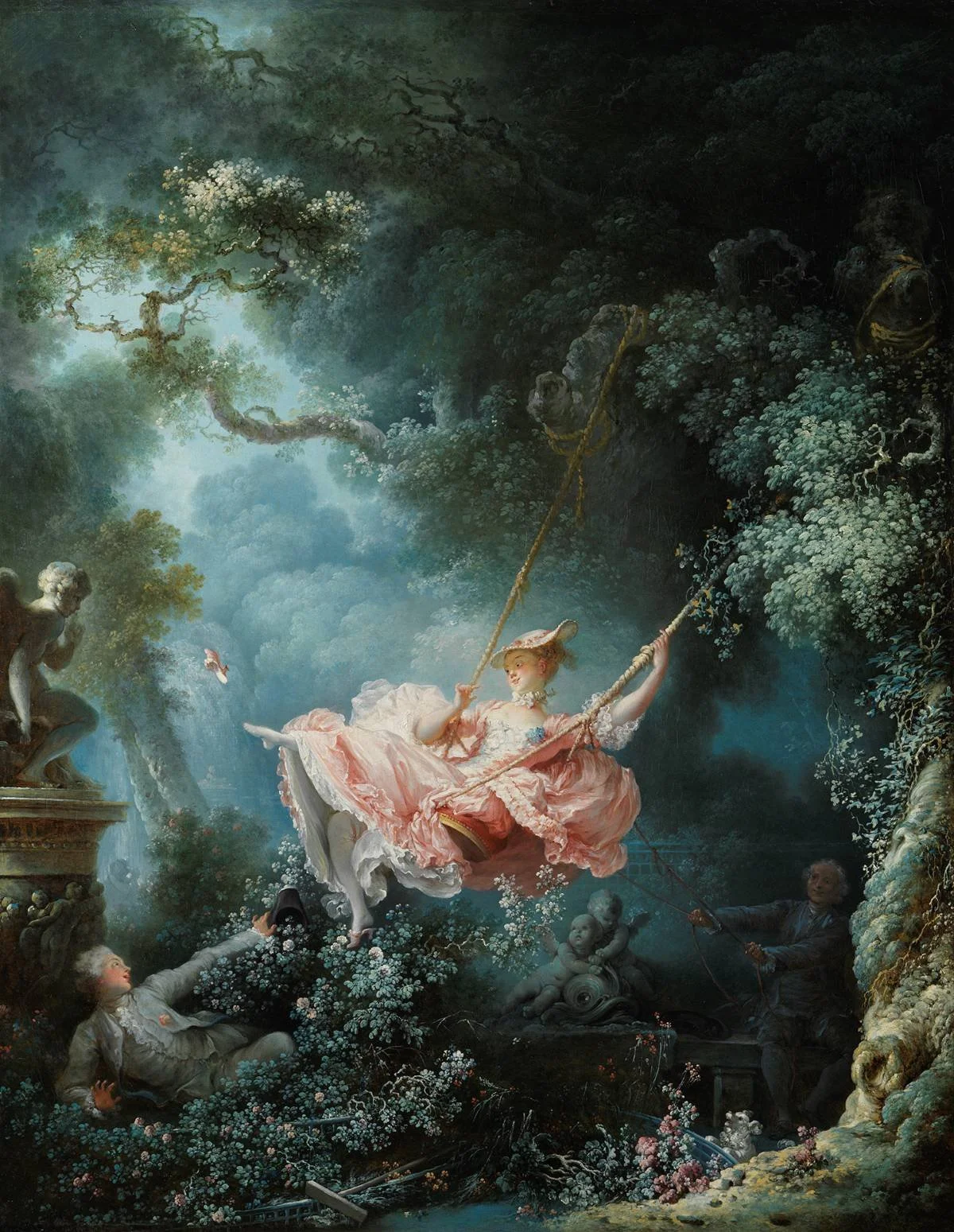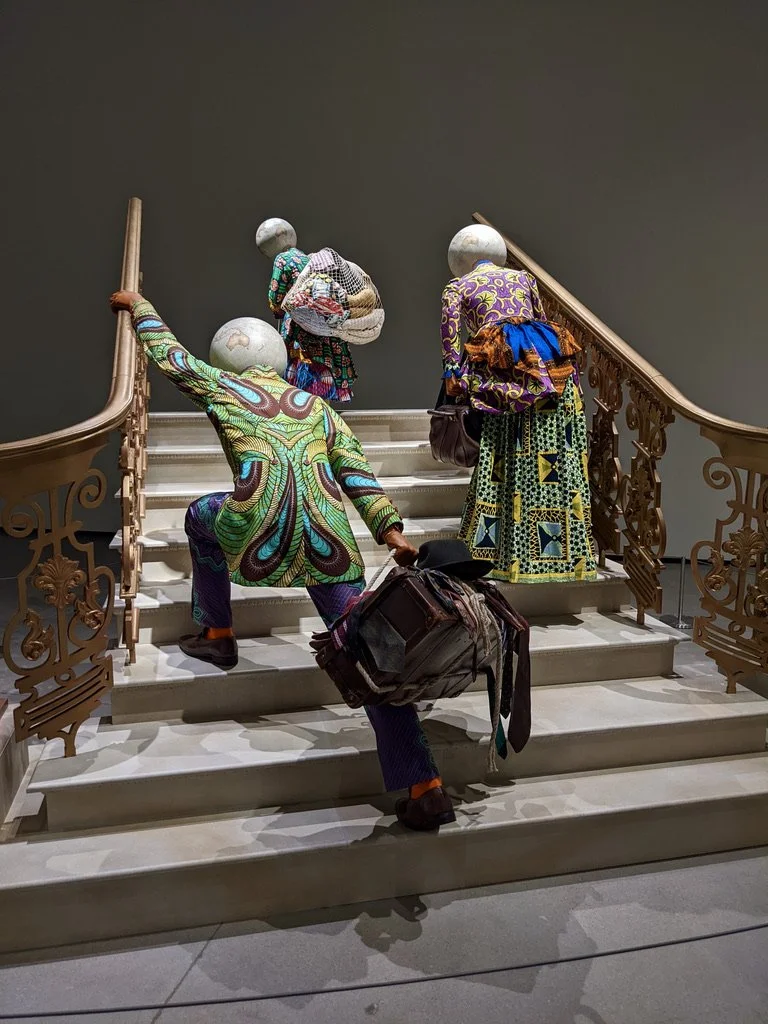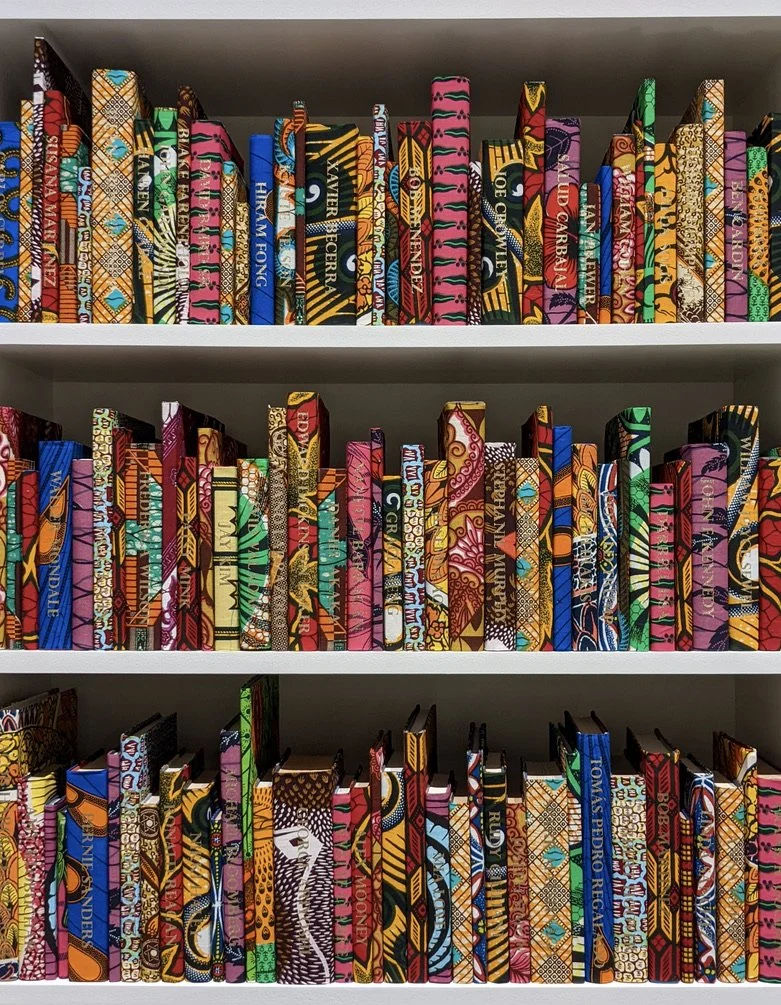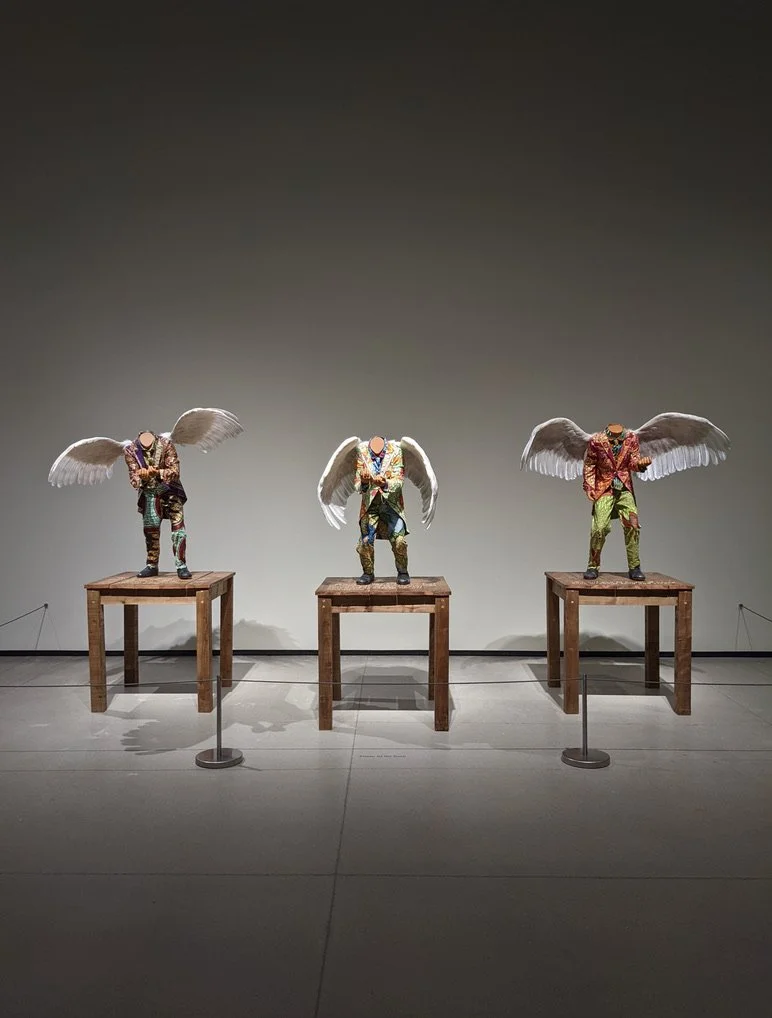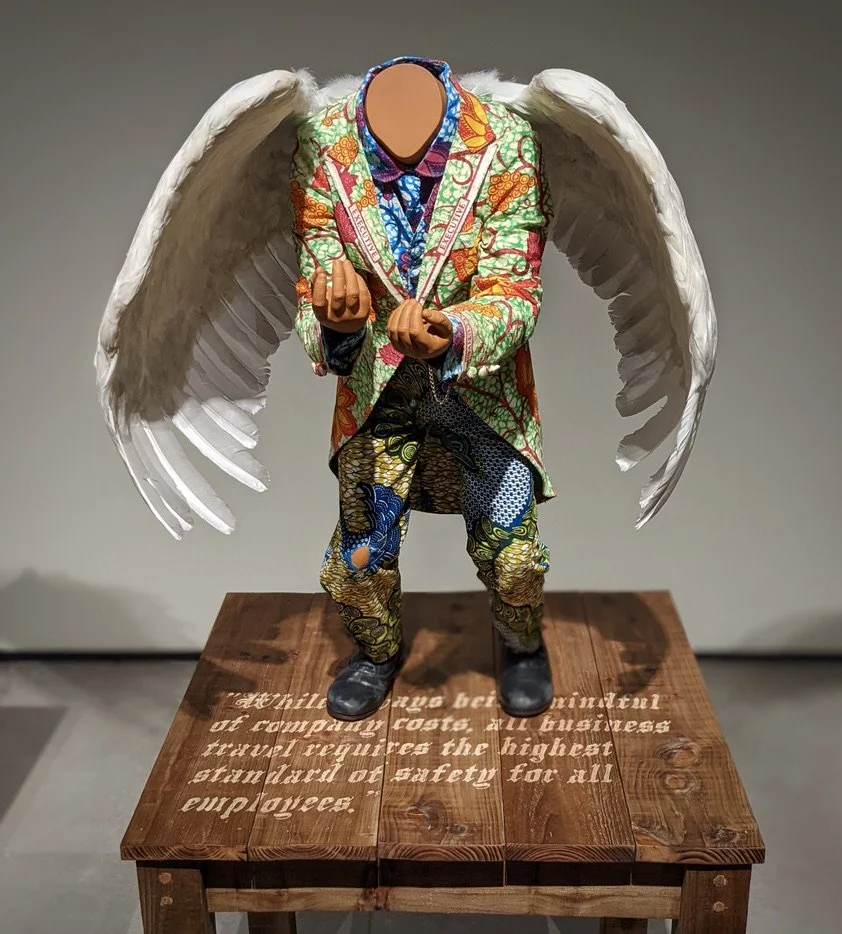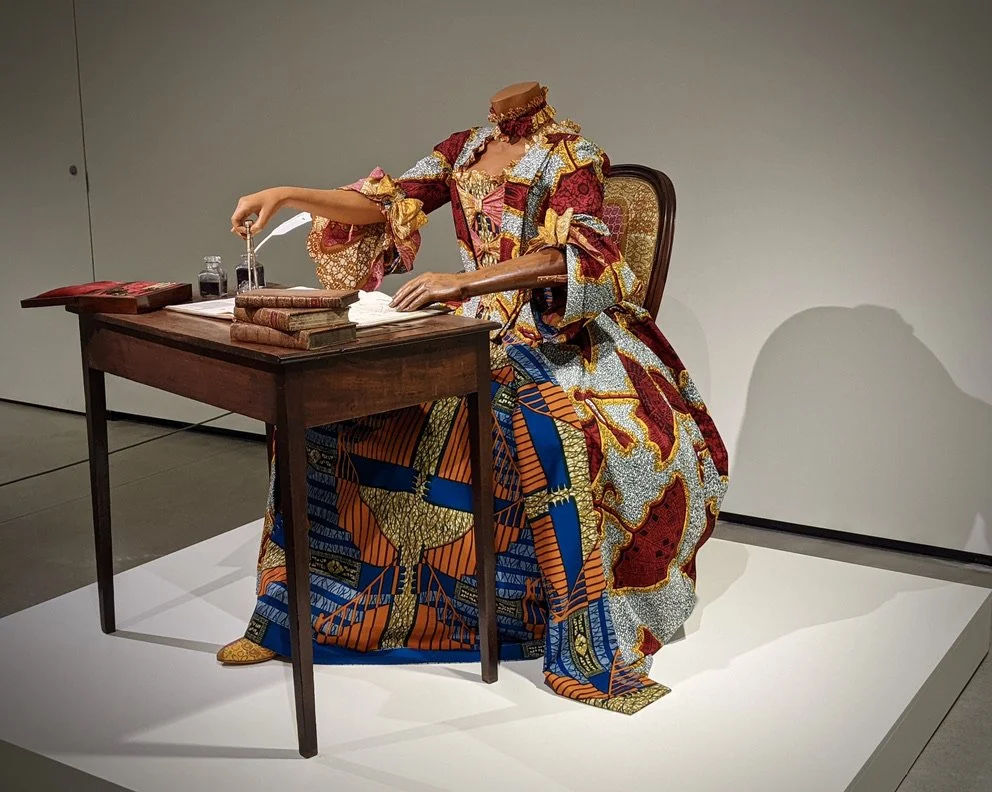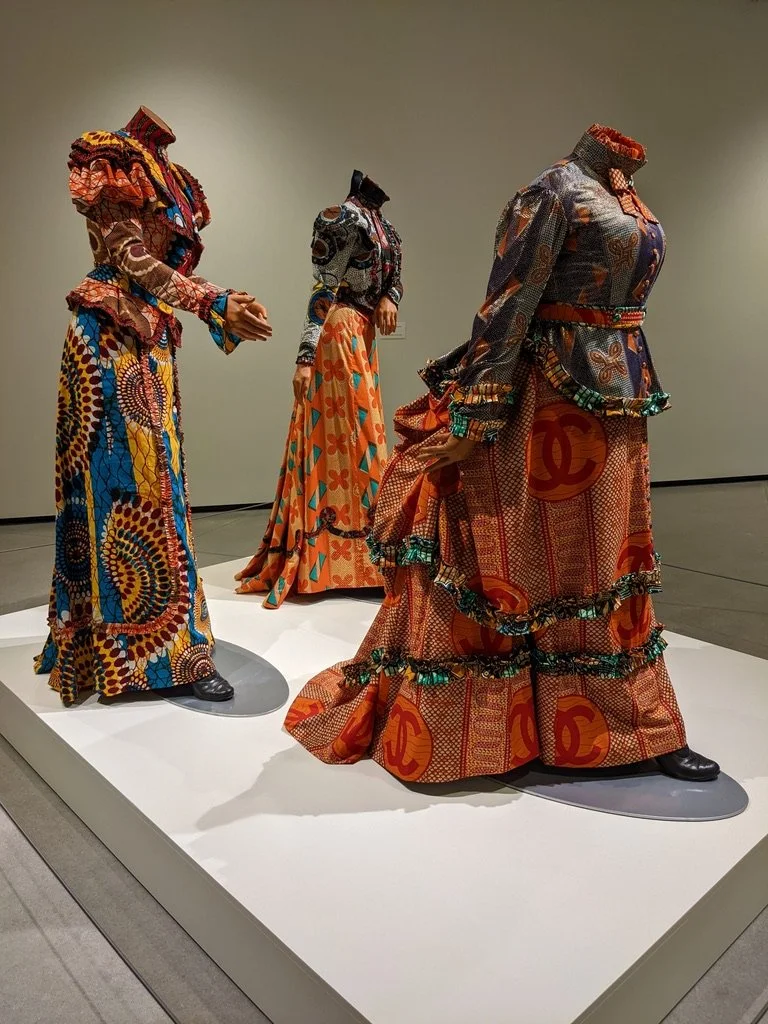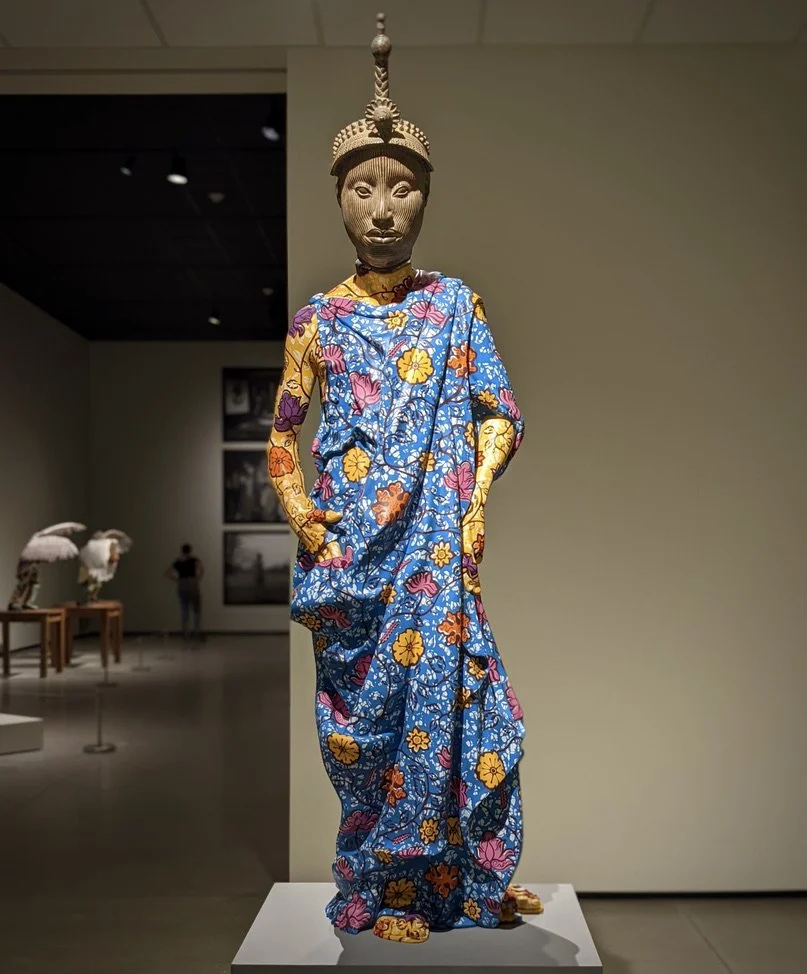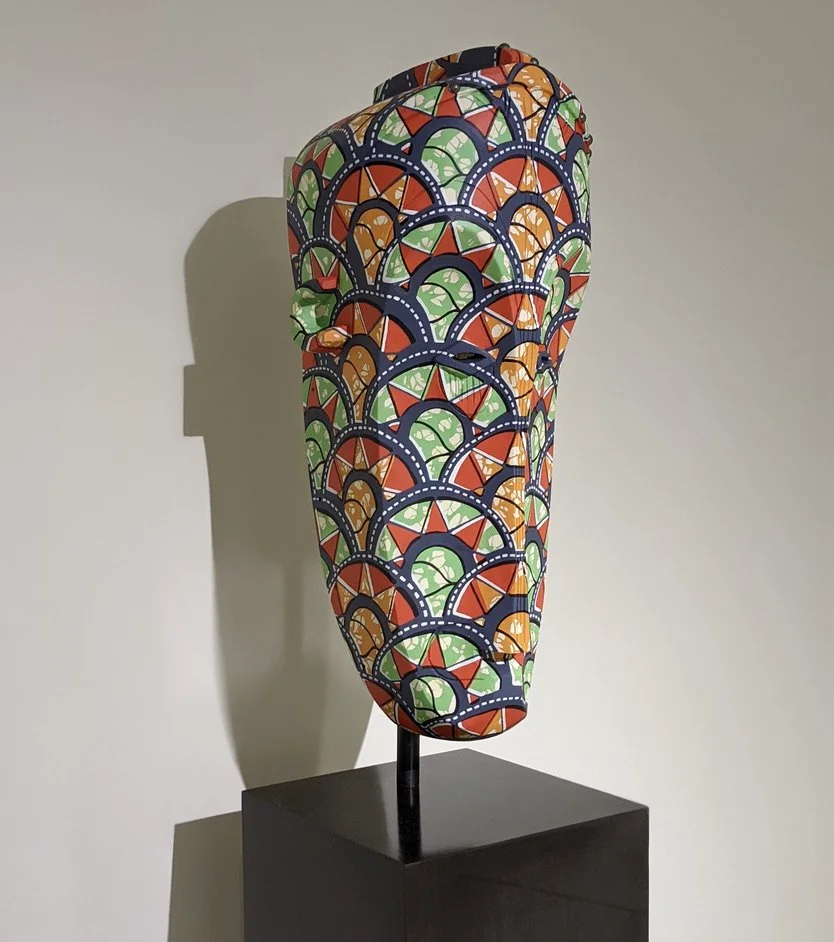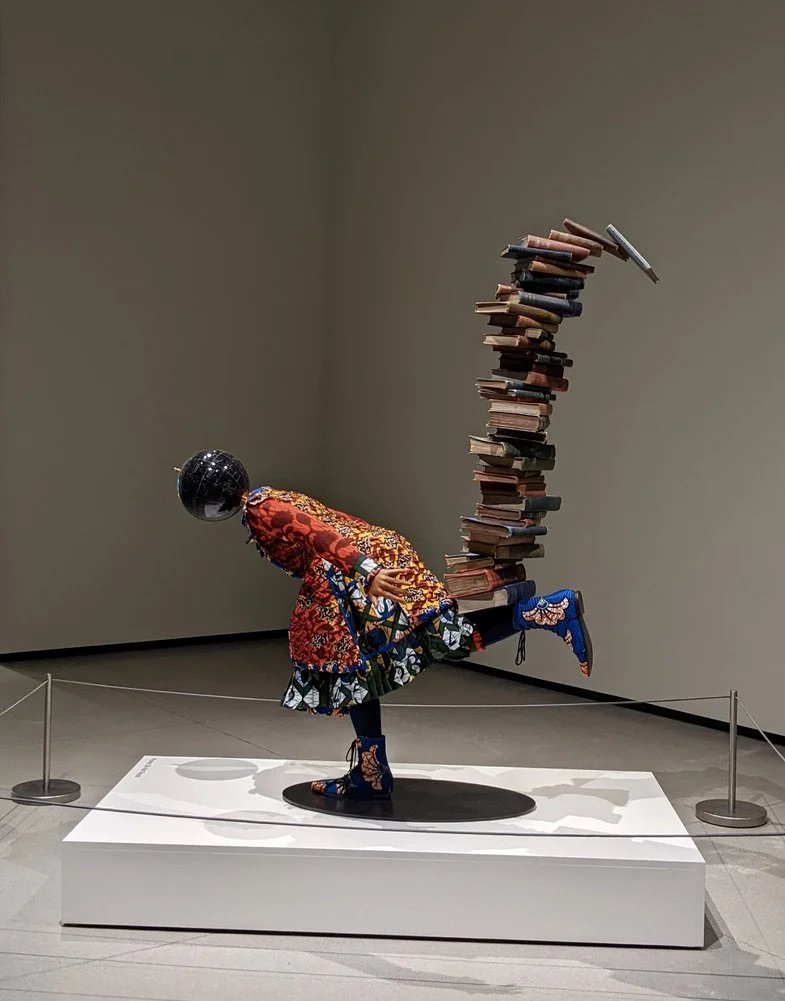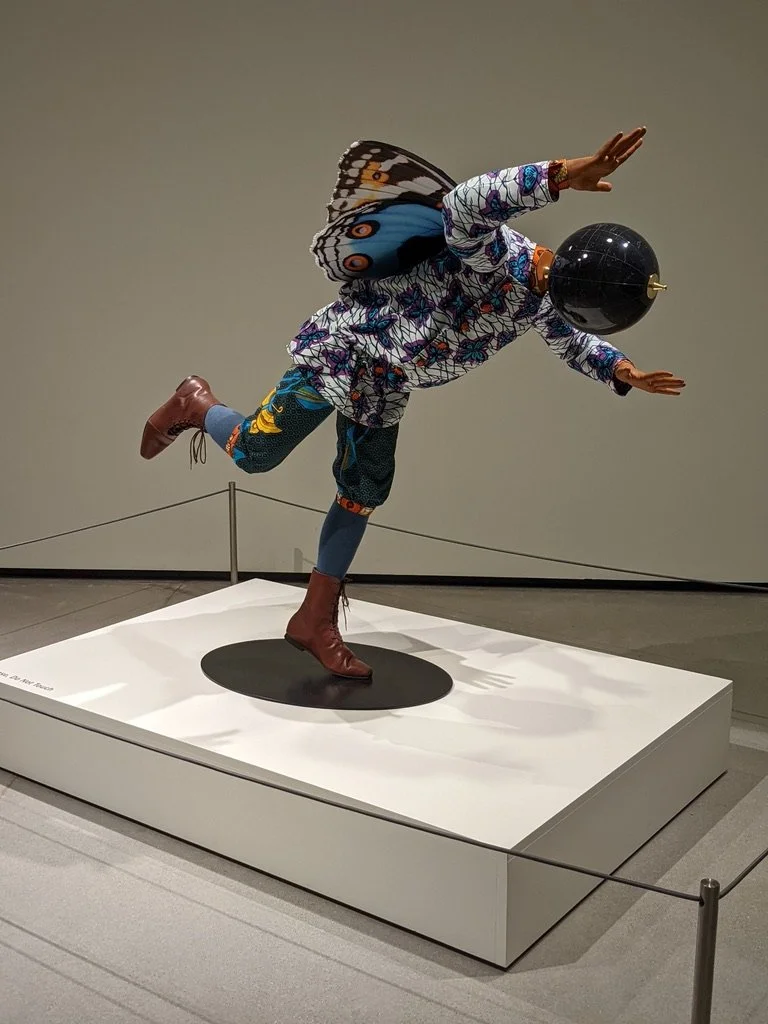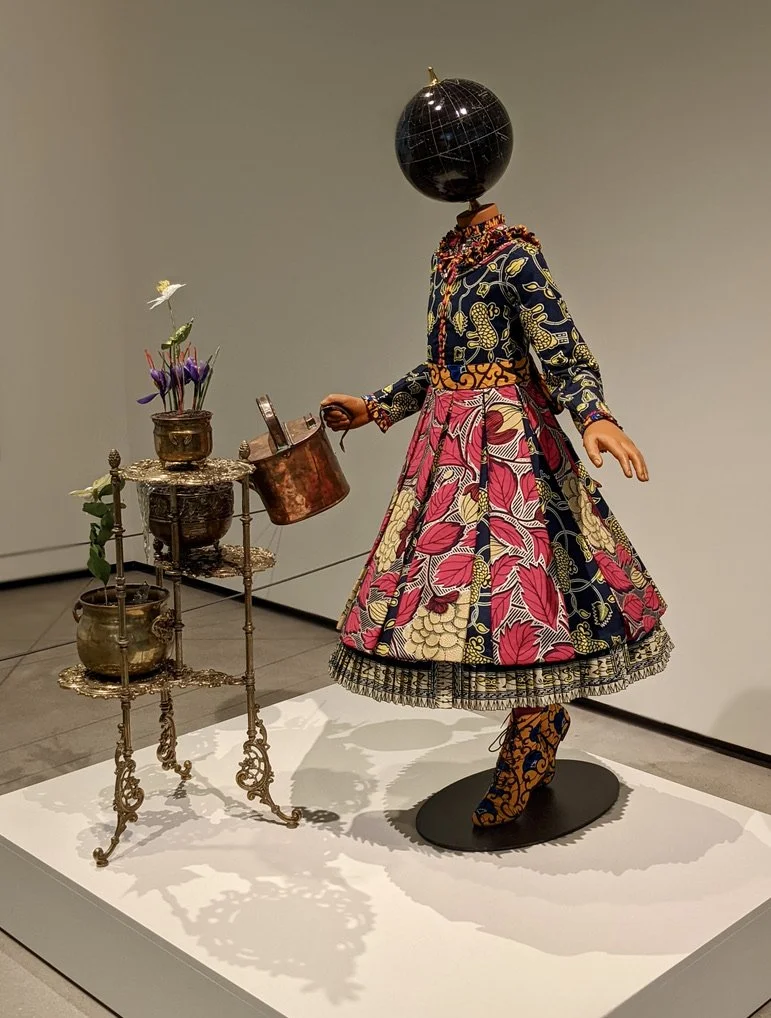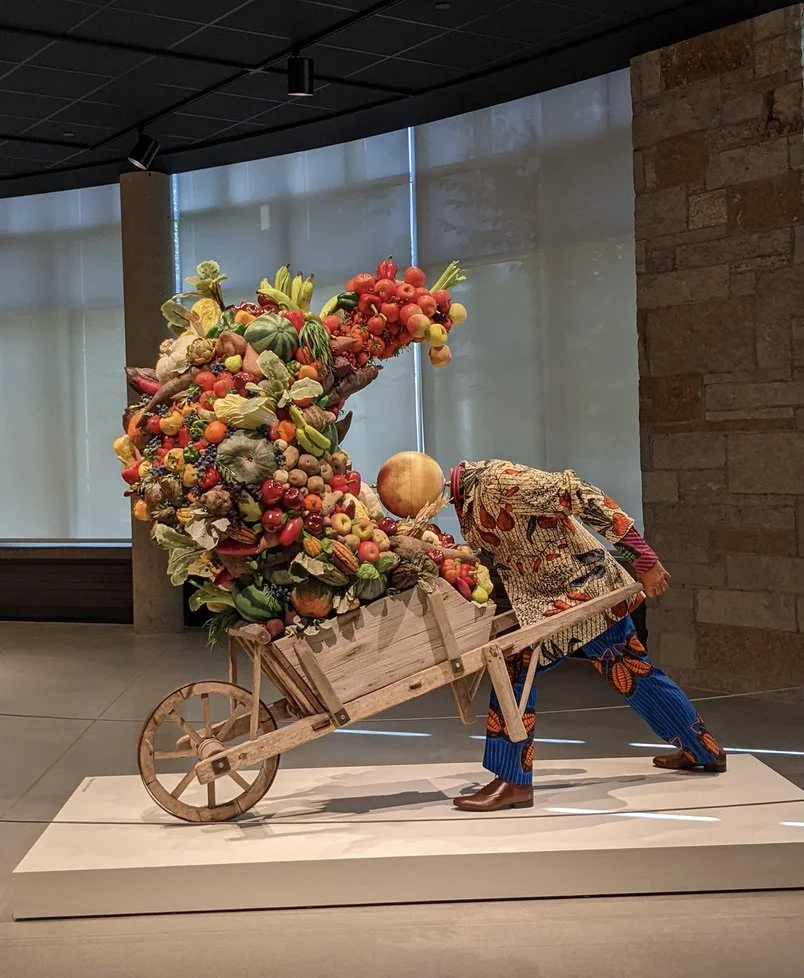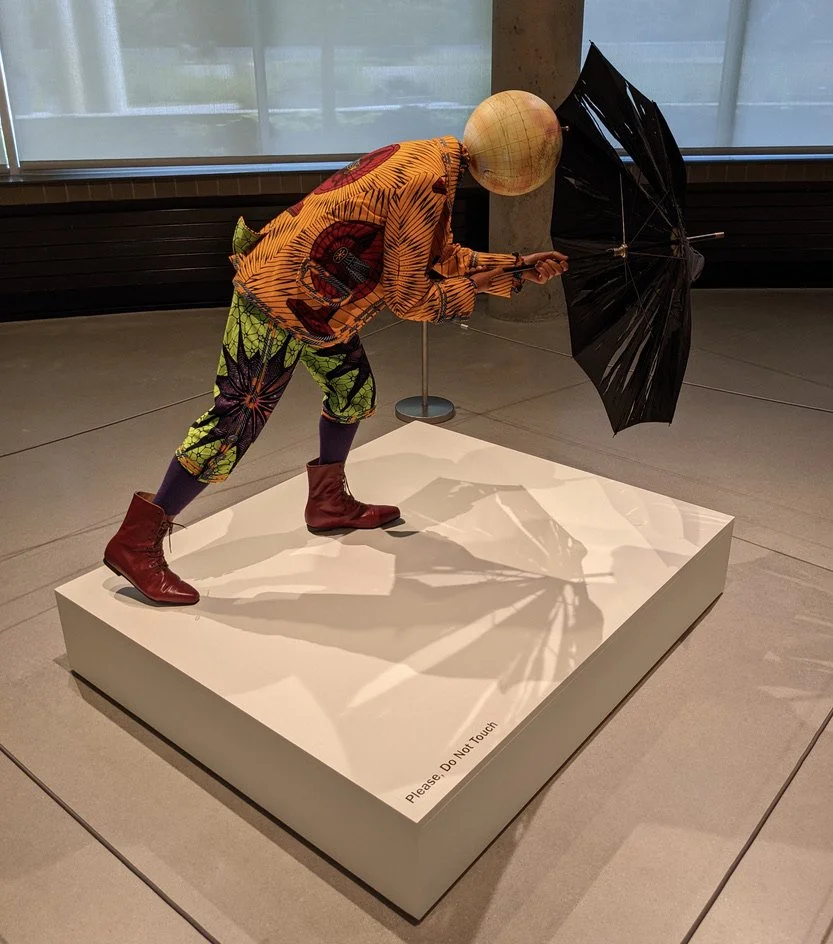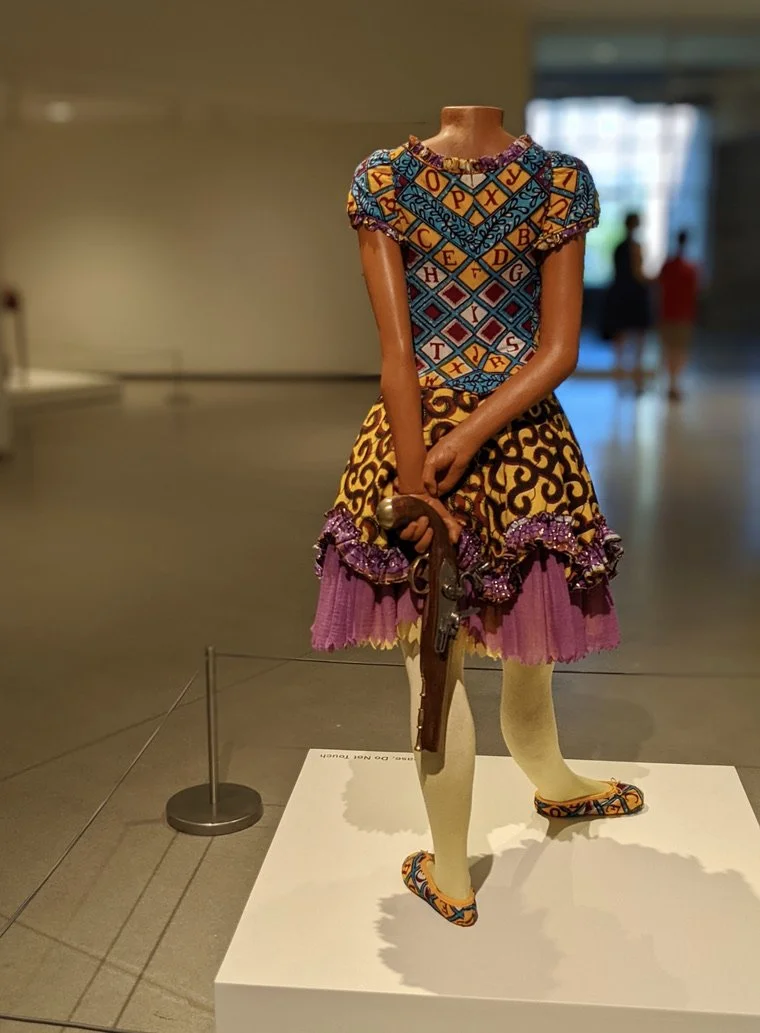
Nick Cave, (background) Tondo, 2022, mixed media including wire, bugle beads, sequined fabric, and wood;
(foreground) Speak Louder, 2011, mixed media including black mother-of-pearl buttons, embroidery floss, upholstery, metal armature, and mannequins.
Photo by Renée DeVoe Mertz.
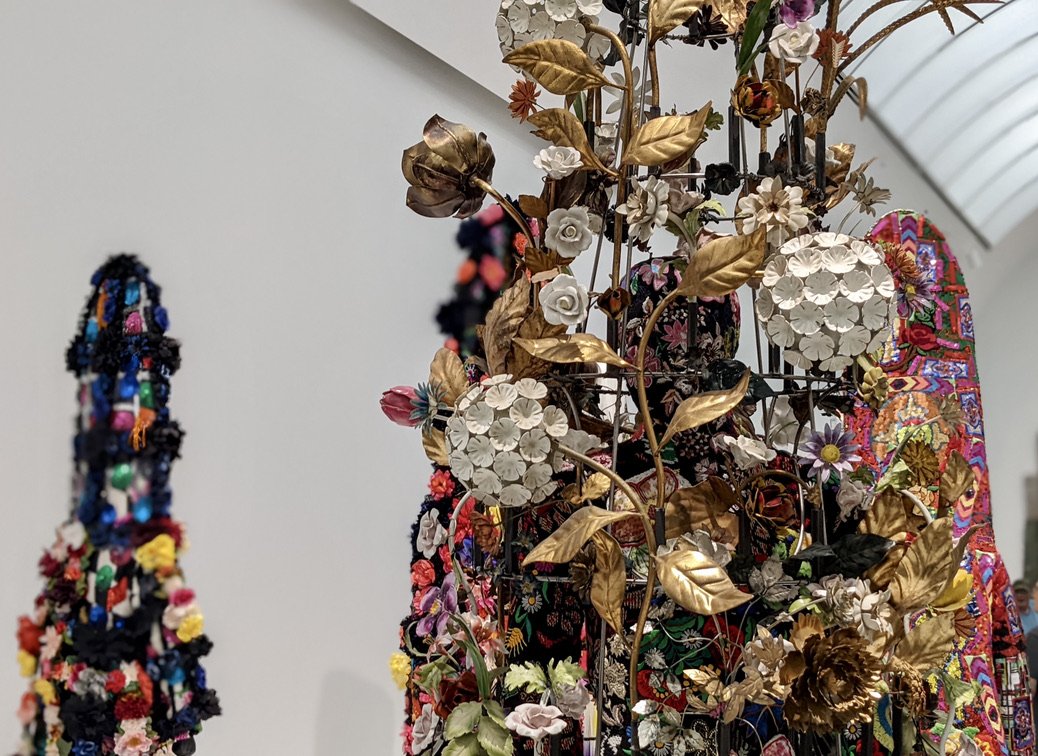
Nick Cave, Soundsuits, mixed media including mannequins.
Photo by Renée DeVoe Mertz.
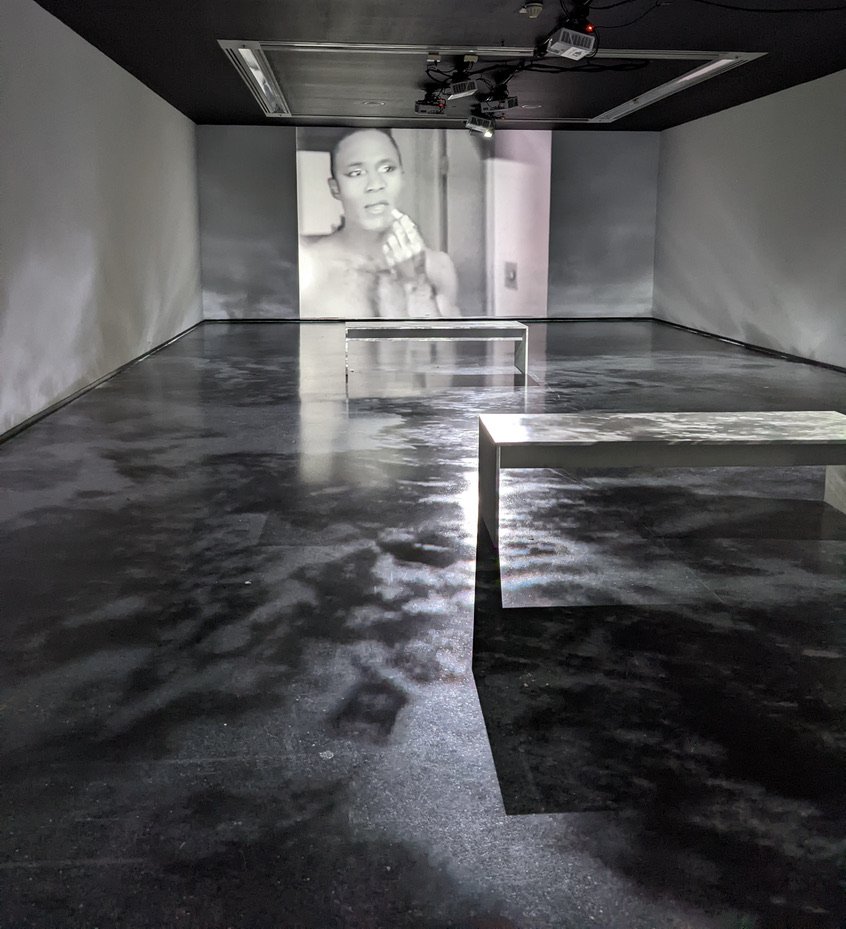
Nick Cave, Nikki, 1989, single-channel video and Hy-Dyve, 2016, 18-channel video installation with sound.
Photo by Renée DeVoe Mertz.
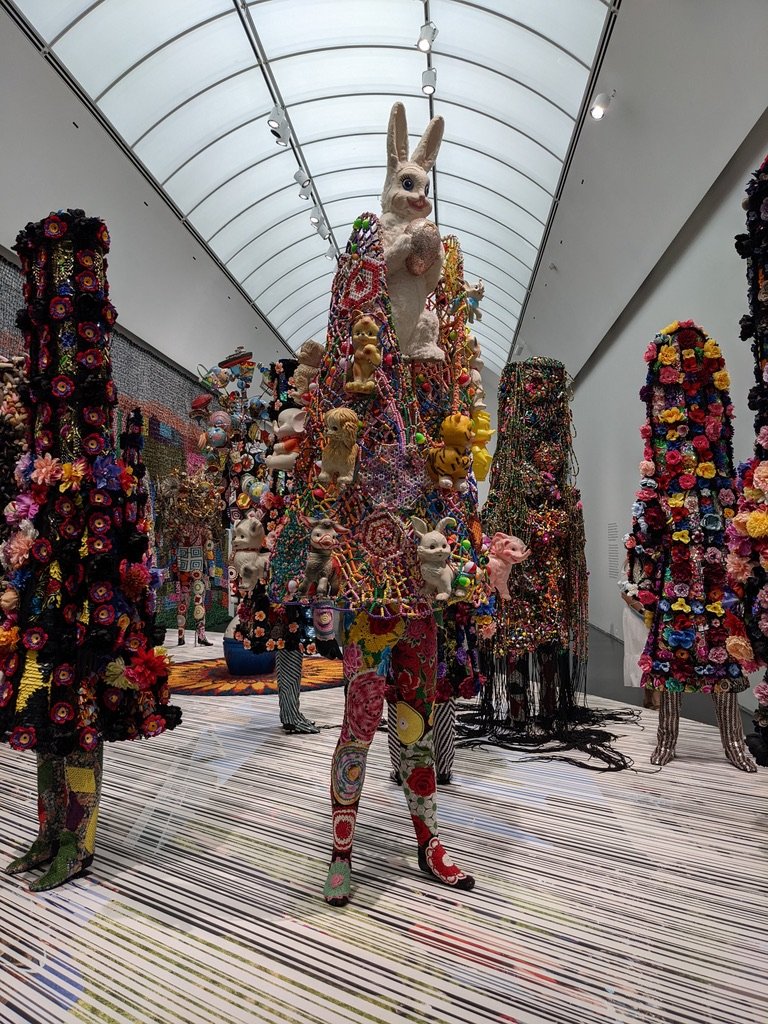
Nick Cave, Soundsuits, mixed media including mannequins.
Photo by Renée DeVoe Mertz.
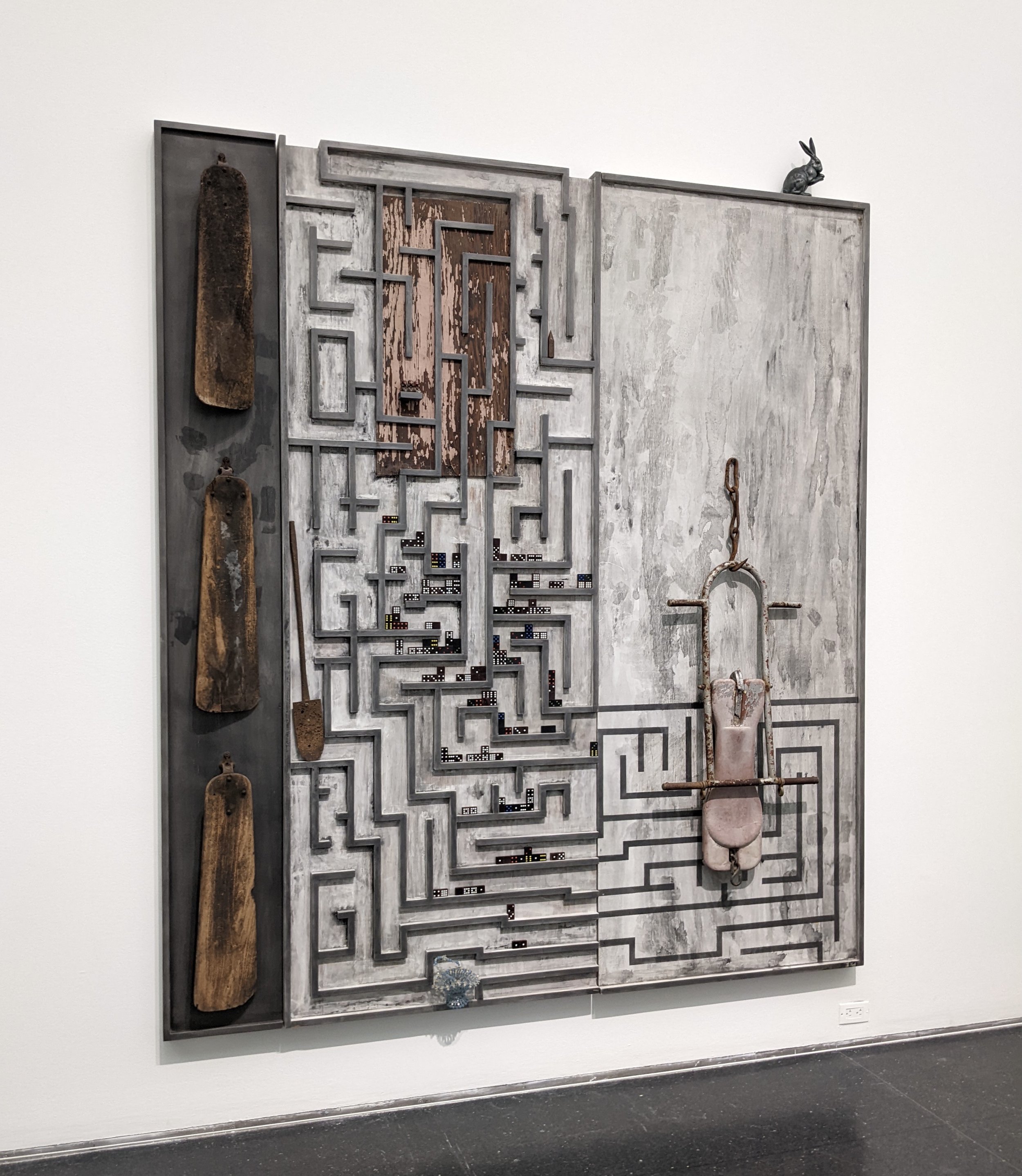
Nick Cave, Longing, 2000, mixed media including found objects and wood.
Photo by Renée DeVoe Mertz.
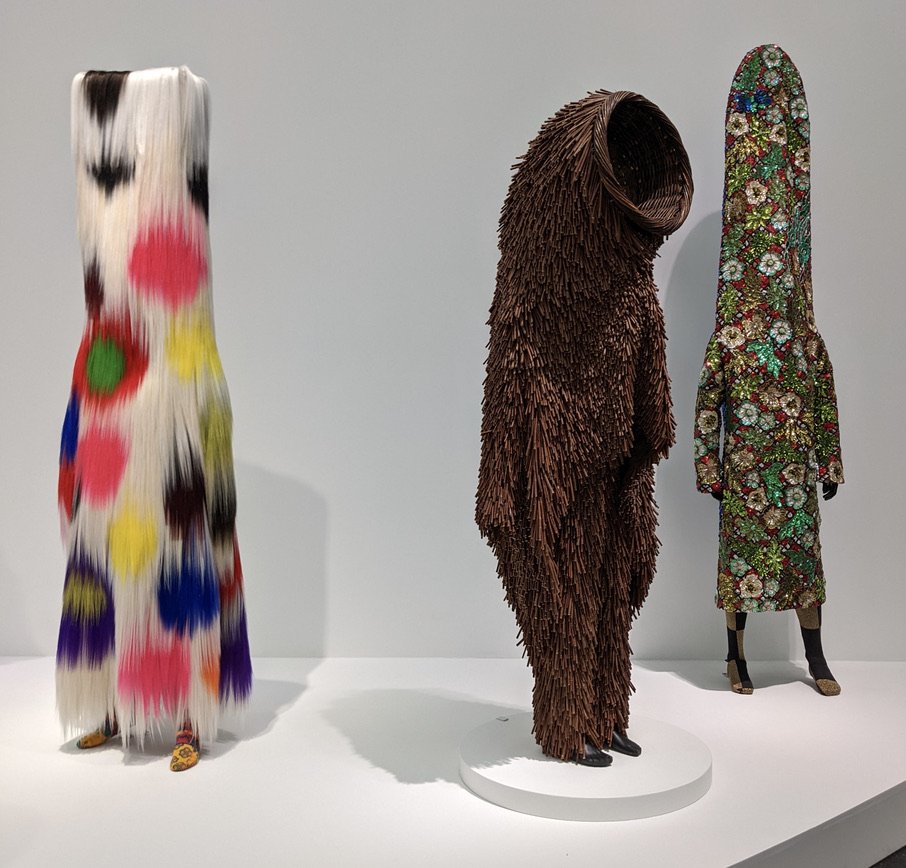
Nick Cave, Soundsuits; 2015, 2011, and 2012; mixed media including mannequins.
Photo by Renée DeVoe Mertz.

Nick Cave, I Wouldn’t Bet Against It, 2007, mixed media including vintage fabric, dice, and objects.
Photo by Renée DeVoe Mertz.
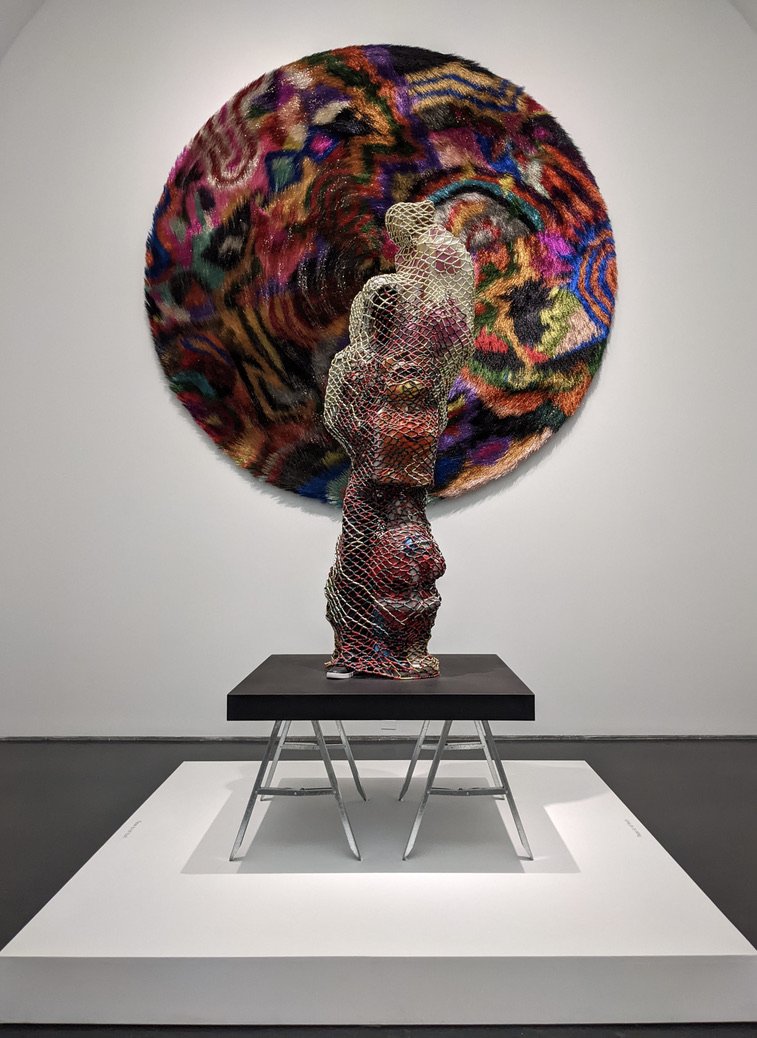
Nick Cave, (background) Tondo, 2022, mixed media including wire, bugle beads, sequined fabric, and wood;
(foreground) TM13, 2015, mixed media including vintage blow molds, pony beads, pipe cleaners, mannequin, and garments.
Photo by Renée DeVoe Mertz.
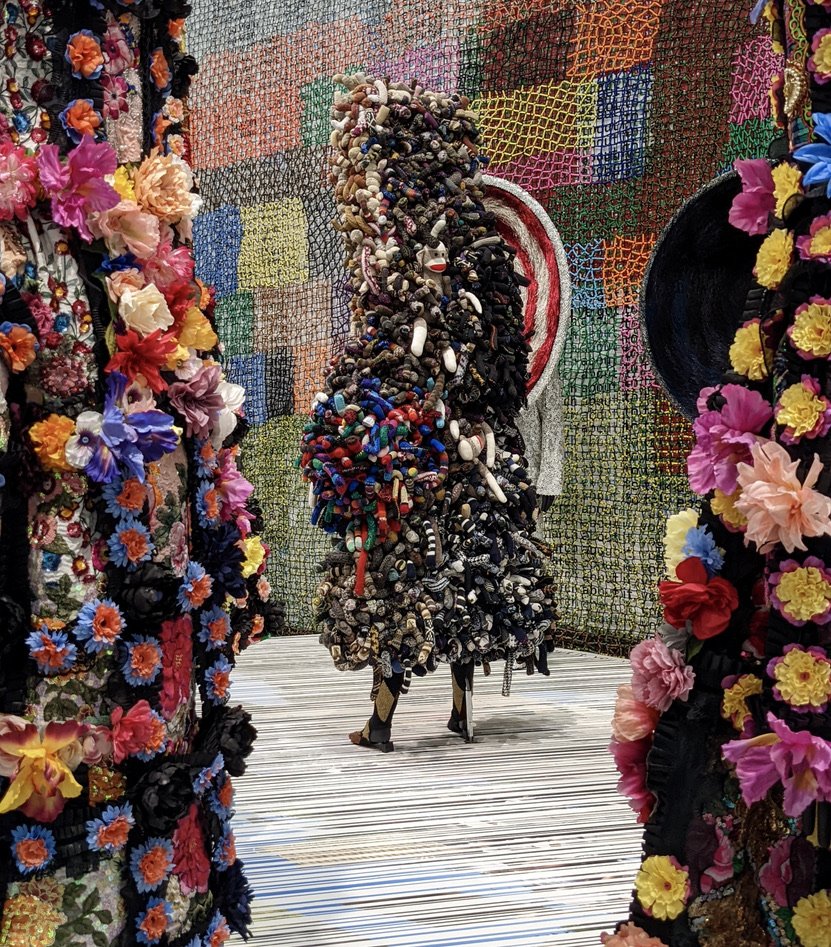
Nick Cave’s Soundsuits displayed in front of Beaded Cliff Wall.
Photo by Renée DeVoe Mertz.

Nick Cave’s Soundsuits displayed in front of Beaded Cliff Wall (background, right) and Tondo (background, left).
Photo by Renée DeVoe Mertz.
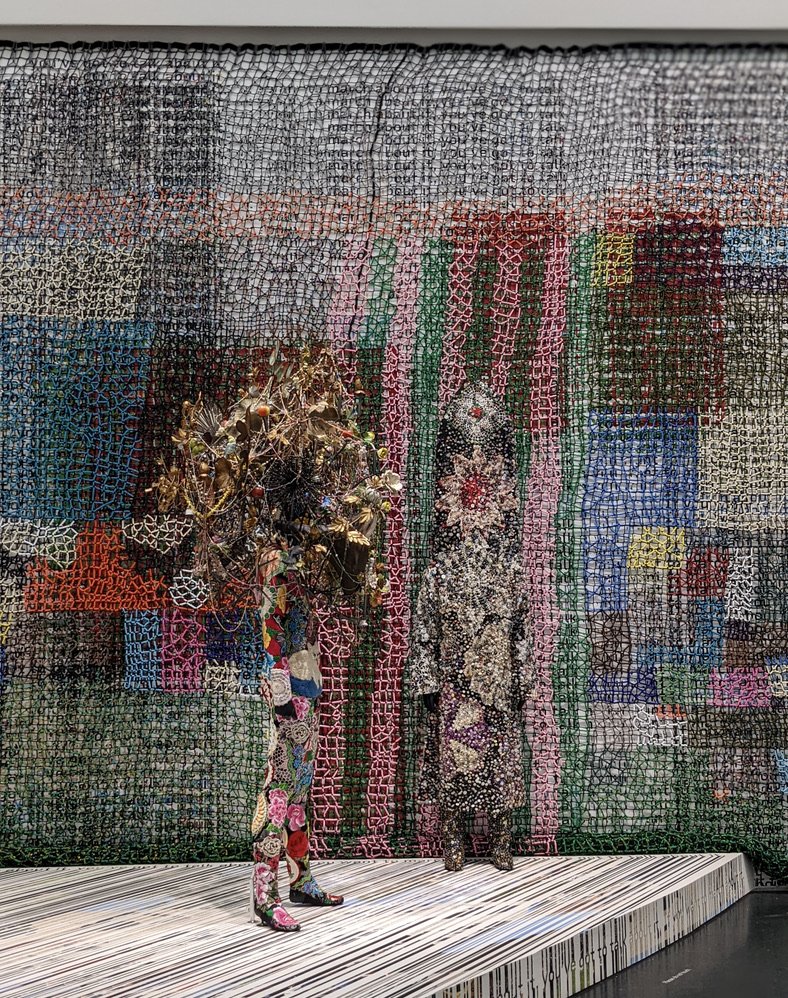
Nick Cave, (background) Beaded Cliff Wall, 2016, millions of pony beads threaded onto shoelaces by hand;
(foreground) Soundsuits, mixed media including mannequins.
Photo by Renée DeVoe Mertz.
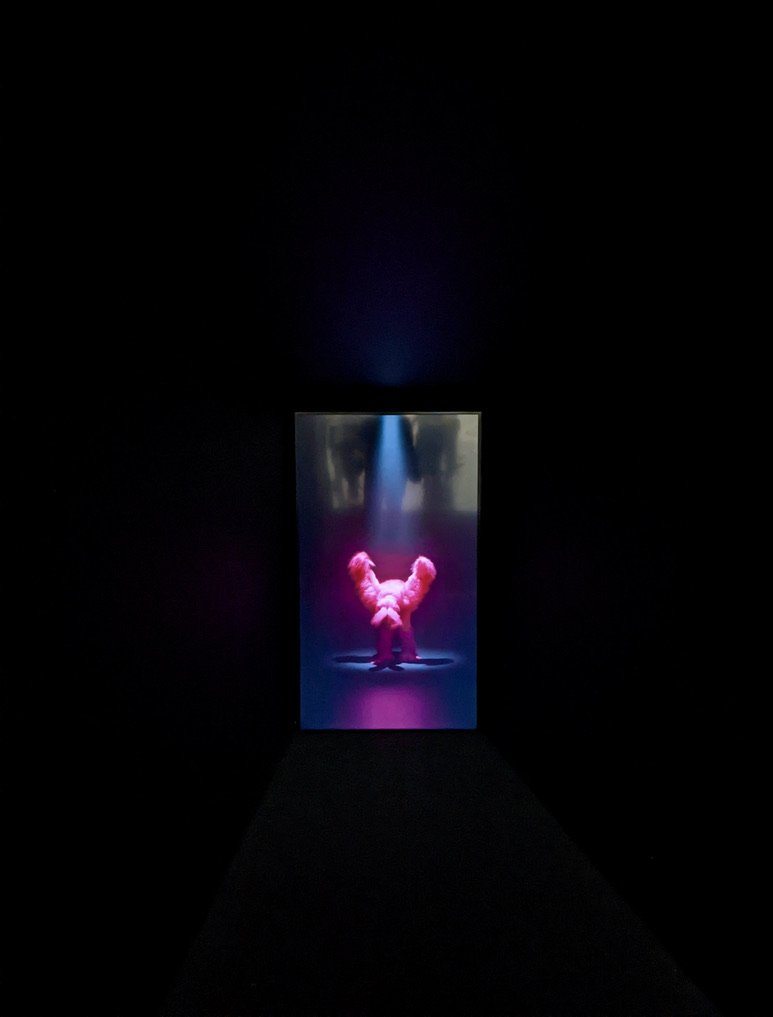
Nick Cave, Bunny Boy, 2012, single-channel video.
Photo by Renée DeVoe Mertz.
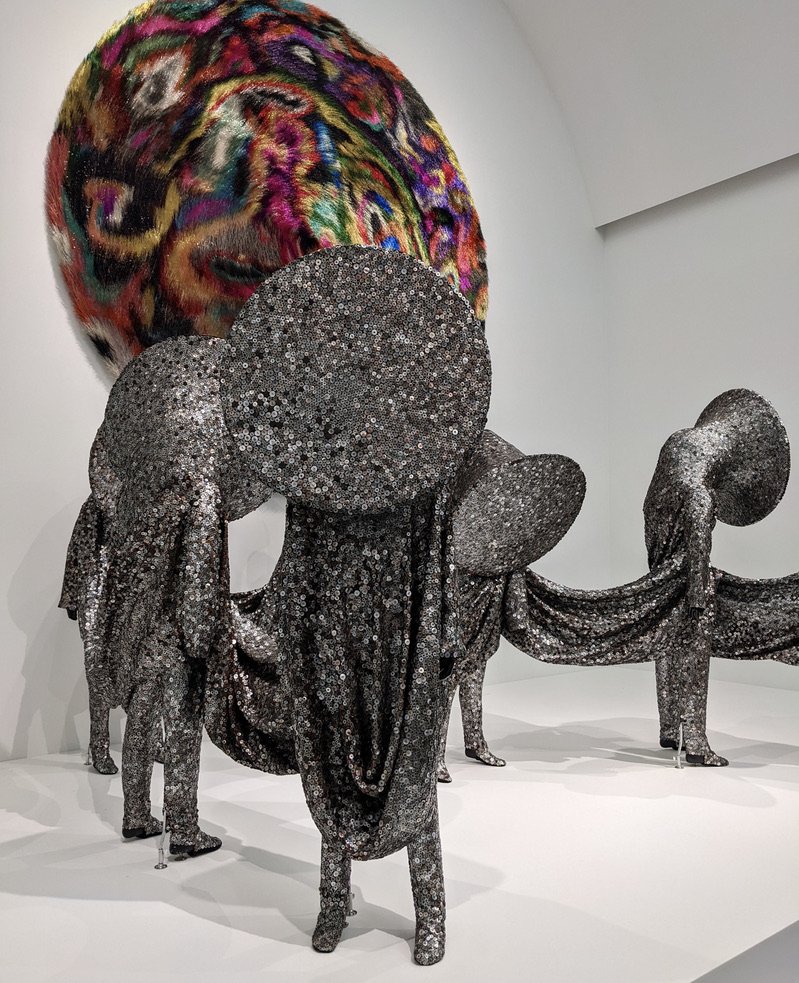
Nick Cave, (background) Tondo, 2022, mixed media including wire, bugle beads, sequined fabric, and wood;
(foreground) Speak Louder, 2011, mixed media including black mother-of-pearl buttons, embroidery floss, upholstery, metal armature, and mannequins.
Photo by Renée DeVoe Mertz.

Nick Cave, detail from Spinner Forest, 2020, hanging mobiles made from metallic spinning garden ornaments.
Photo by Renée DeVoe Mertz.
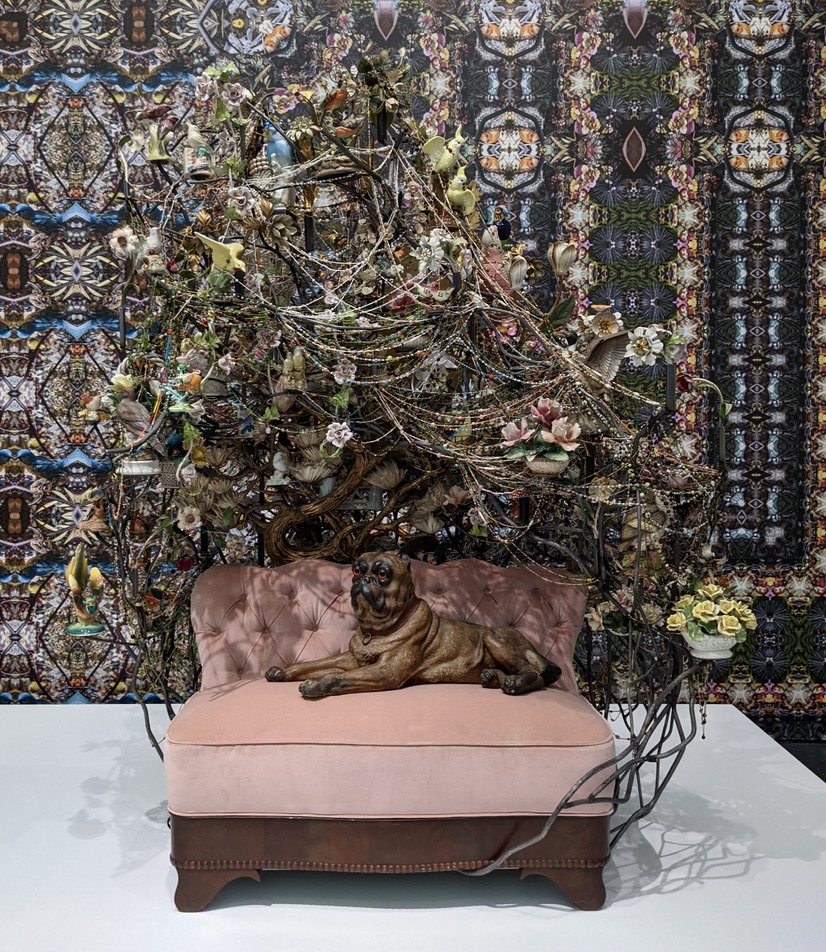
Nick Cave, (background; in collaboration with Bob Faust) Wallwork, 2022, 4-color digitally printed poly cotton wallpaper; source photography by James Prinz Photography;
(foreground) Rescue, 2013, mixed media including ceramic birds, metal flowers, ceramic pug, vintage settee, and light fixture.
Photo by Renée DeVoe Mertz.
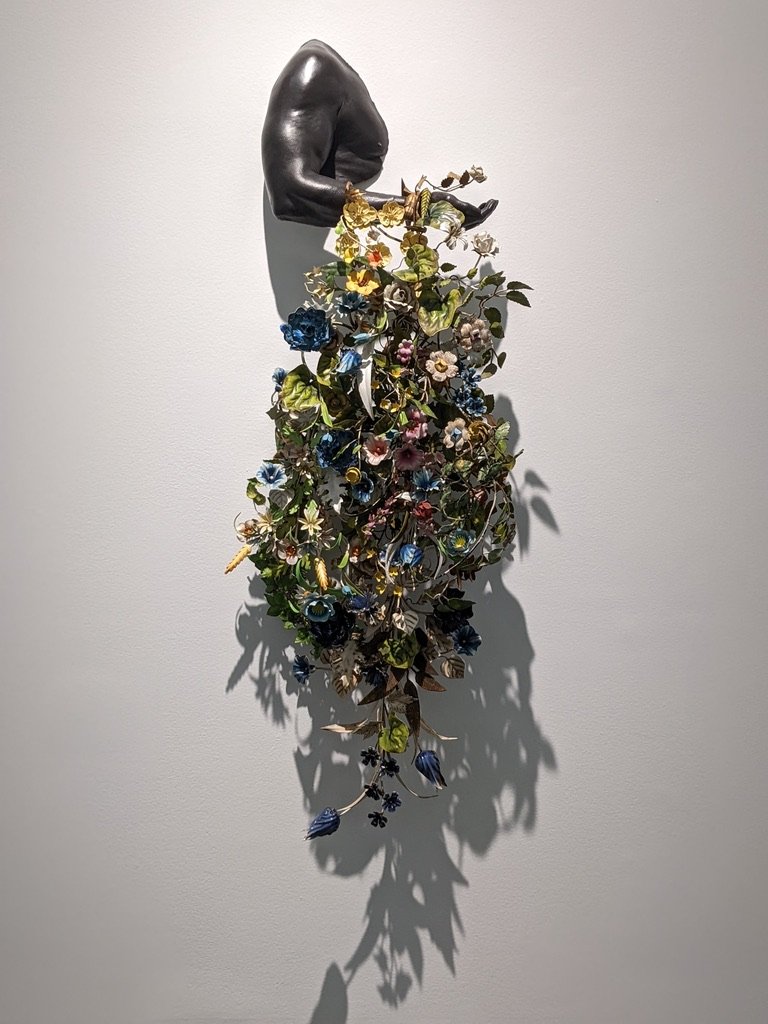
Nick Cave, Arm Peace, 2018, cast bronze and vintage tole flowers.
Photo by Renée DeVoe Mertz.
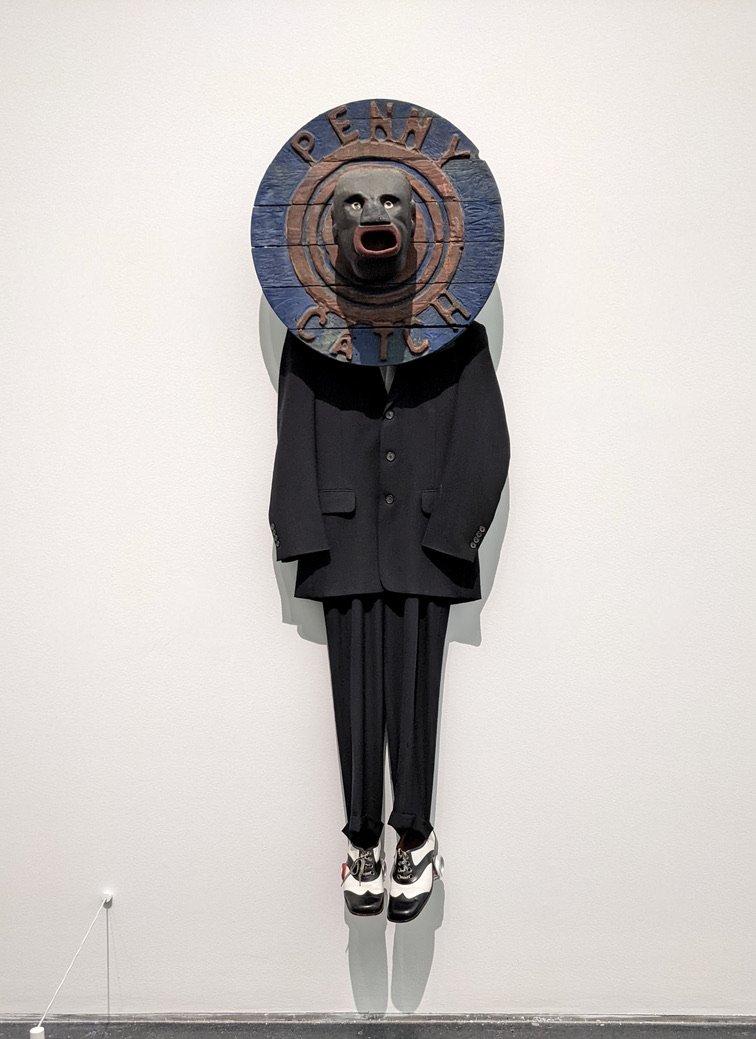
Nick Cave, Penny Catcher, 2009, mixed media including vintage coin toss, suit, shoes, and aluminum cans.
Photo by Renée DeVoe Mertz.
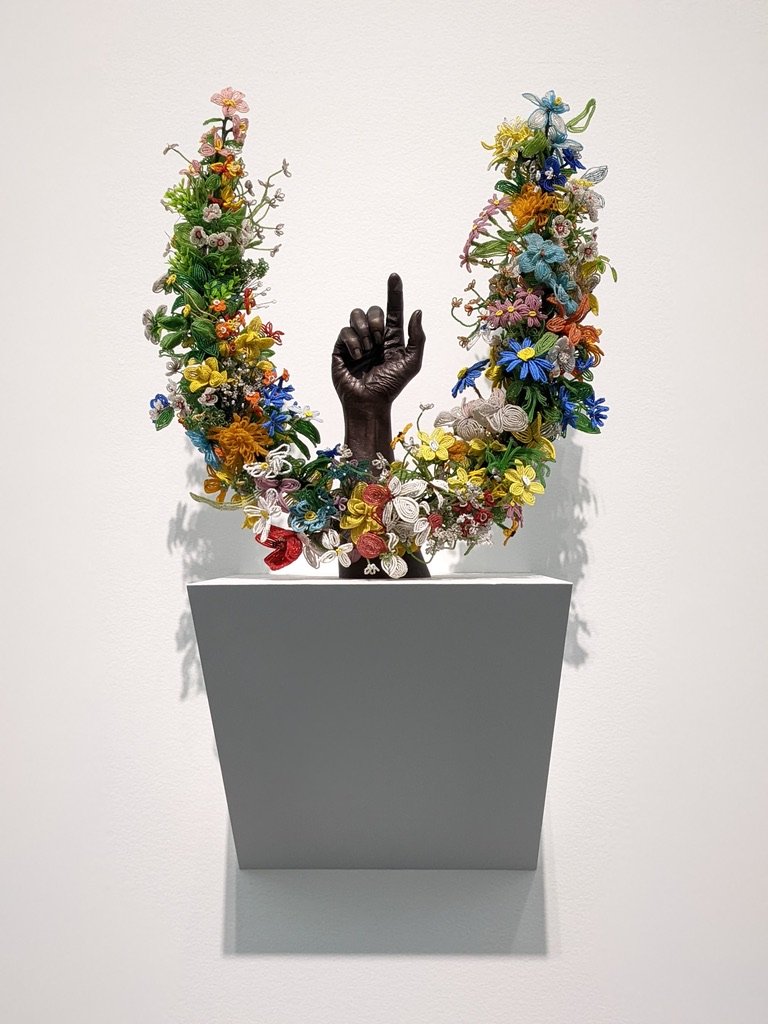
Nick Cave, Unarmed, 2016, cast bronze, metal, and vintage beaded flowers.
Photo by Renée DeVoe Mertz.
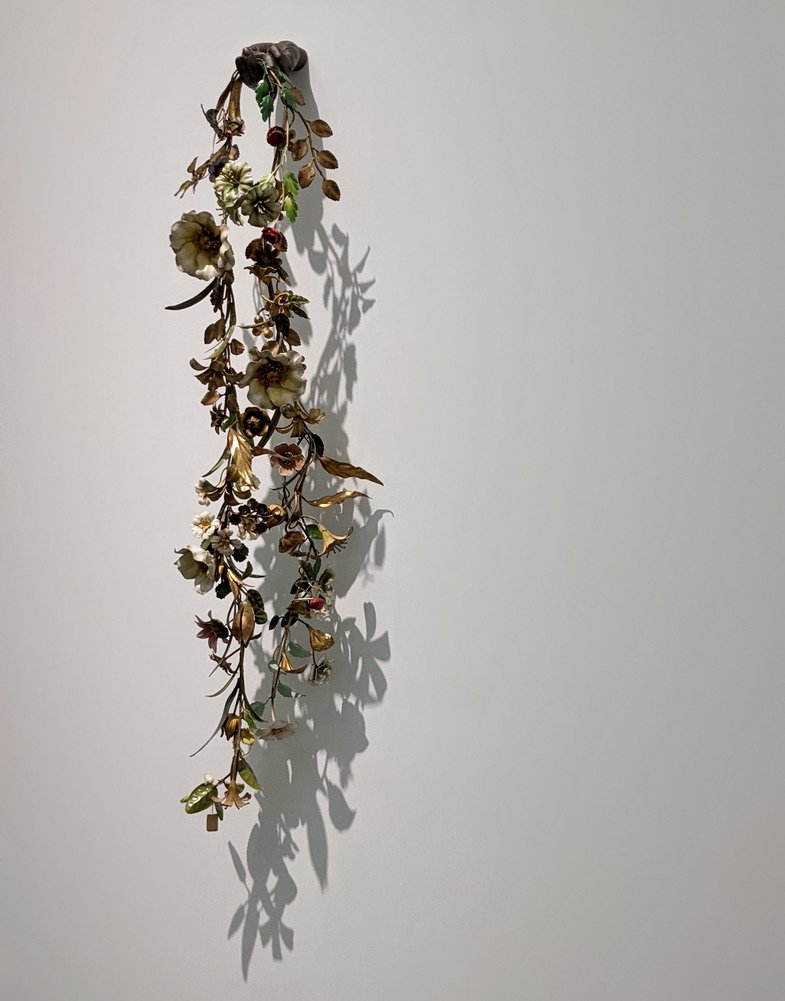
Nick Cave, Chaplet, 2018, cast bronze and vintage tole flowers.
Photo by Renée DeVoe Mertz.

Nick Cave, Untitled, 2014, mixed media including cast bronze arm and cloth hand towels.
Photo by Renée DeVoe Mertz.
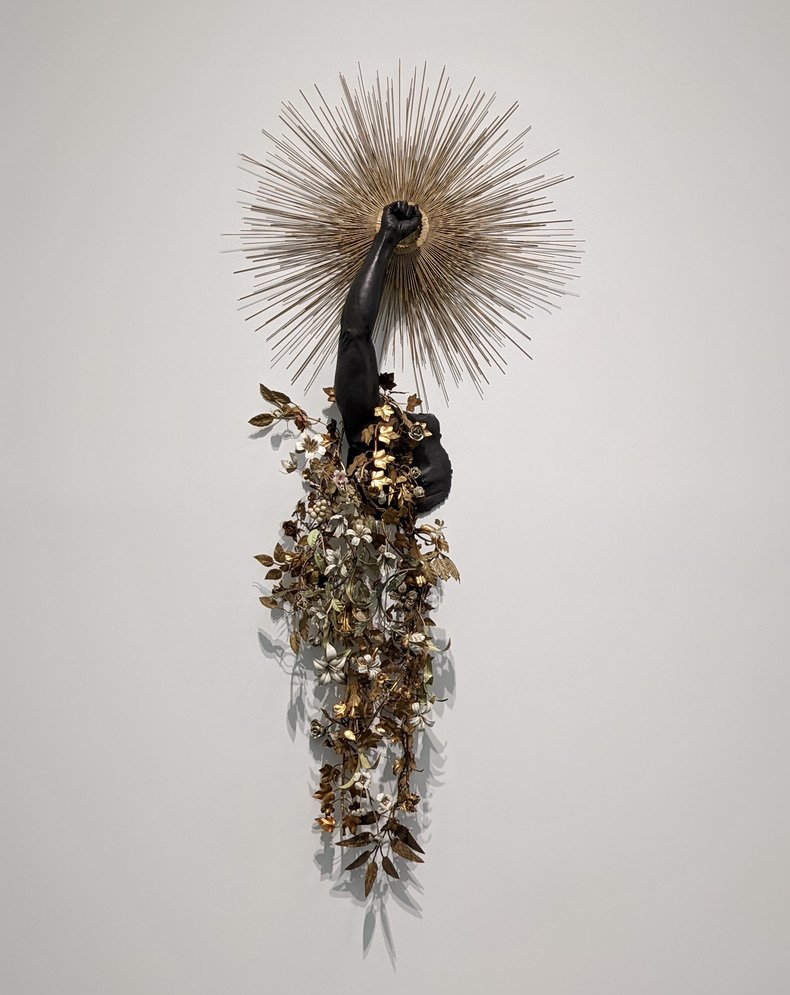
Nick Cave, Arm Peace, 2019, cast bronze, sunburst, and vintage tole flowers.
Photo by Renée DeVoe Mertz.
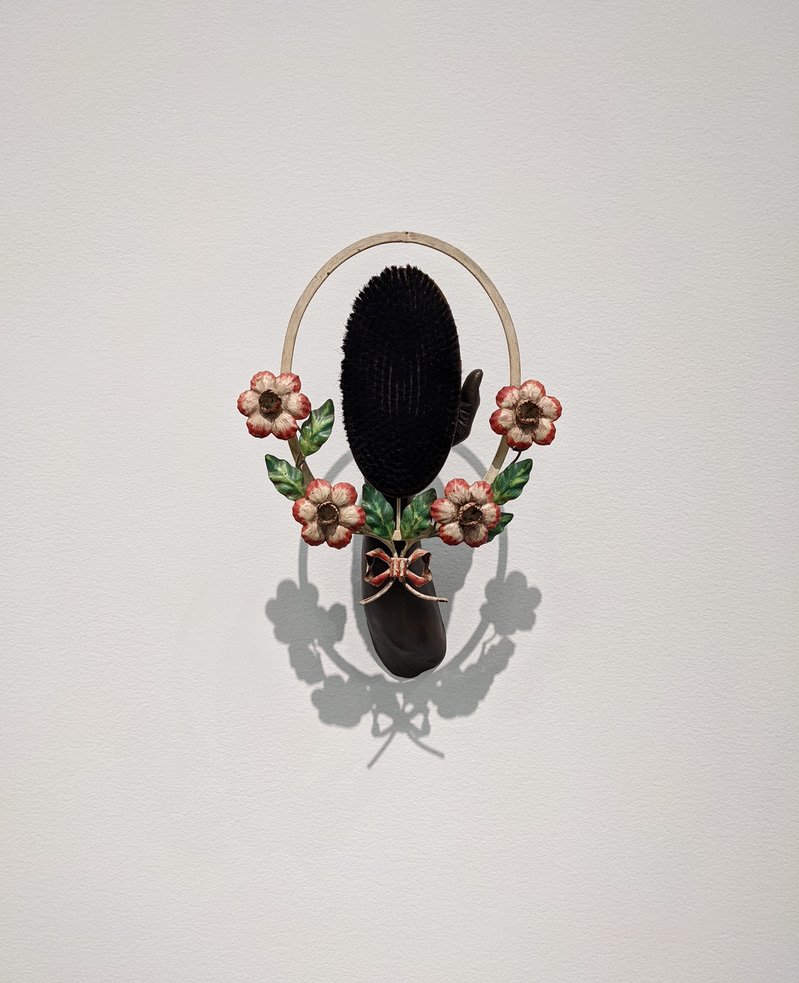
Nick Cave, Shine, 2014, mixed media including cast hand, brush, and vintage metal flower frame.
Photo by Renée DeVoe Mertz.
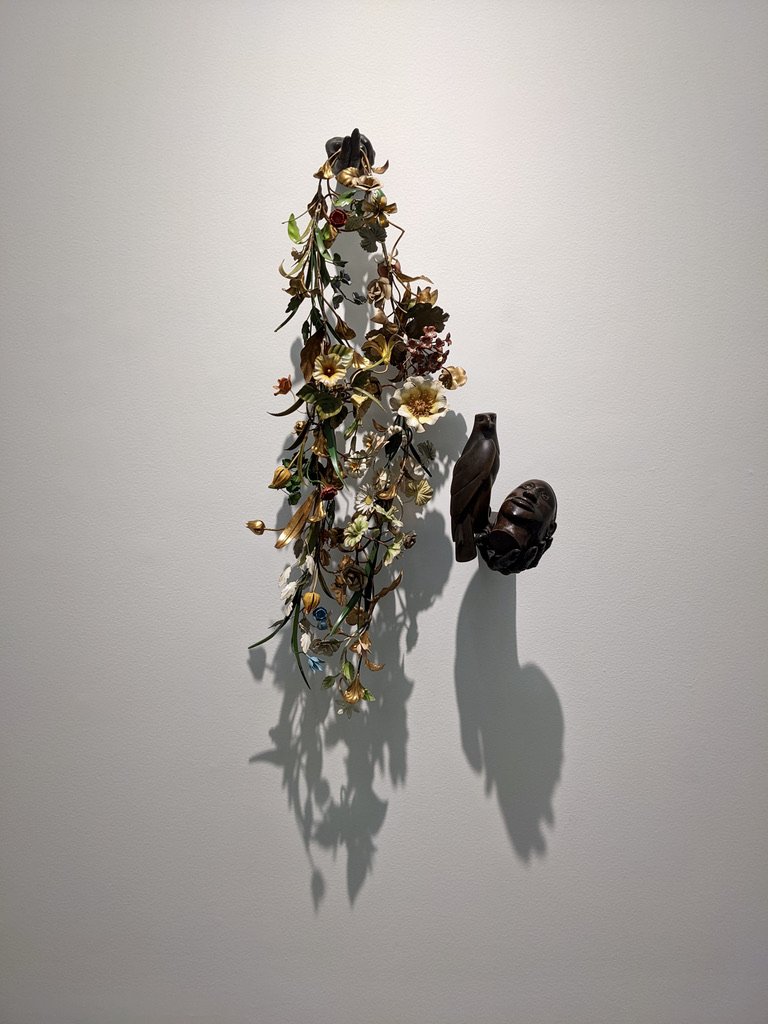
Nick Cave, Untitled, 2018, mixed media including cast bronze and vintage tole flowers, wooden eagle and head, and bronze hand.
Photo by Renée DeVoe Mertz.
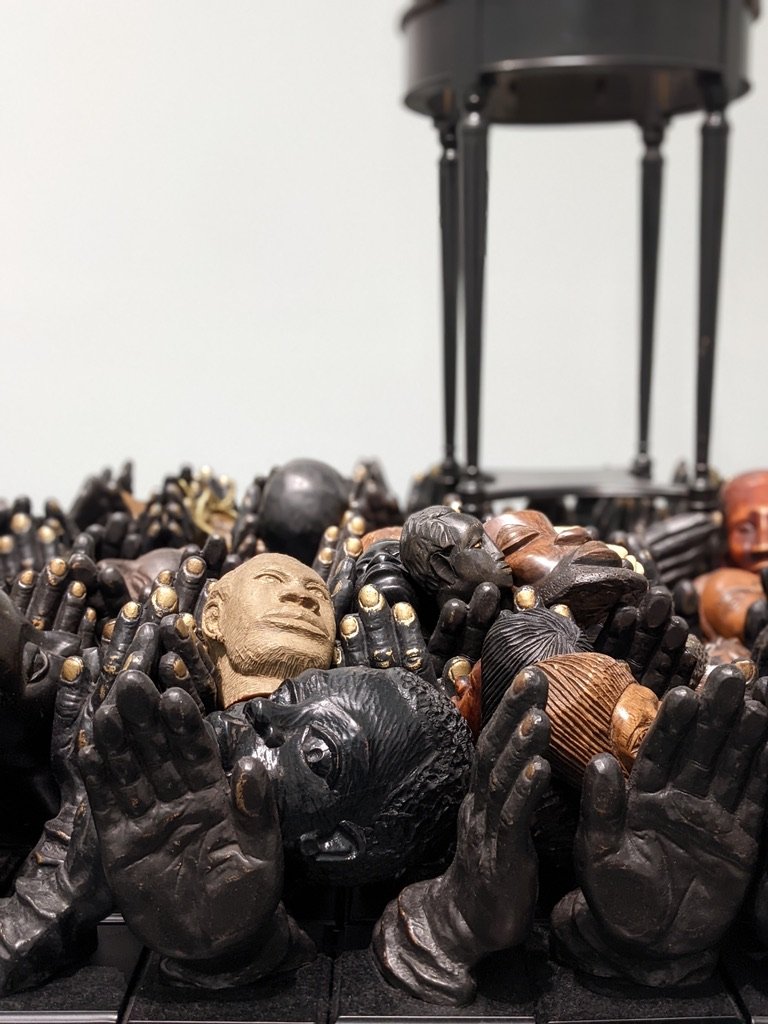
Nick Cave, detail of Untitled, 2018, mixed media including round table, clay head, piano bench, wooden head with vintage tole flowers, pink child’s chair, nineteen wooden heads, wooden eagle, and cast polyurethane hands.
Photo by Renée DeVoe Mertz.

Nick Cave, detail of Platform, 2018, mixed media including a chain of bronze and fiberglass hands, four gramophones, heads, pillow, and wooden eagles.
Photo by Renée DeVoe Mertz.
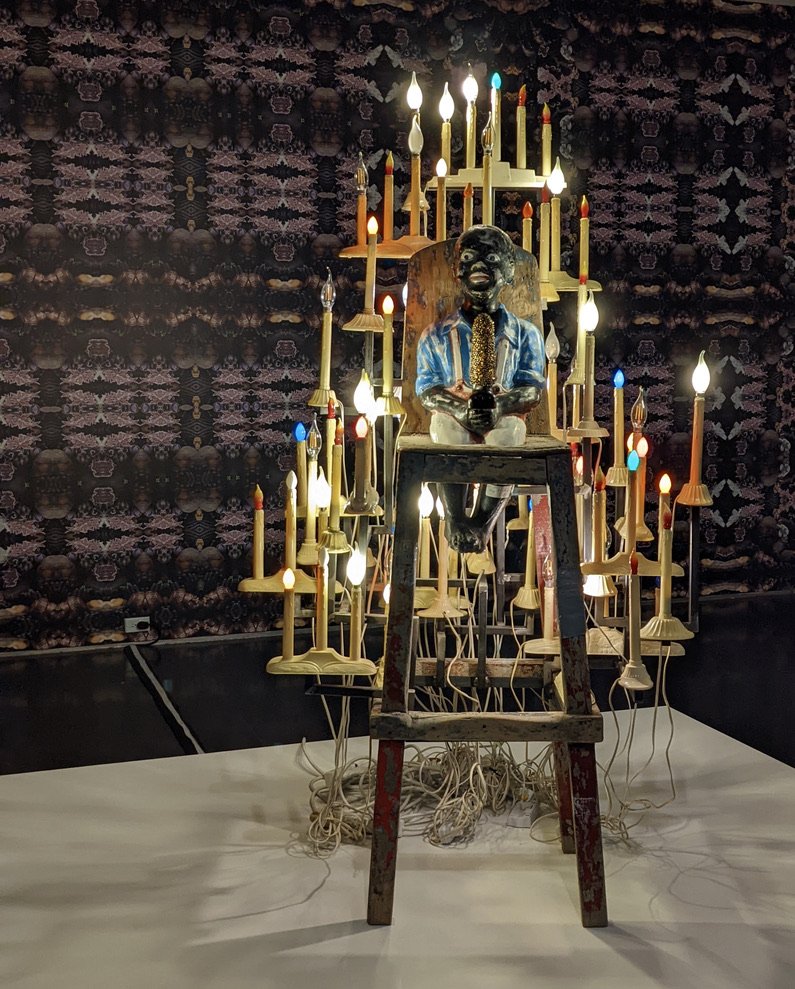
Nick Cave, (background) Wallwork (in collaboration with Bob Faust), 2022, 4-color digitally printed polycotton wallpaper and (foreground) Golden Boy, 2014, mixed media including concrete garden ornament, vintage high chair, dildo, and holiday candles.
Photo by Renée DeVoe Mertz.
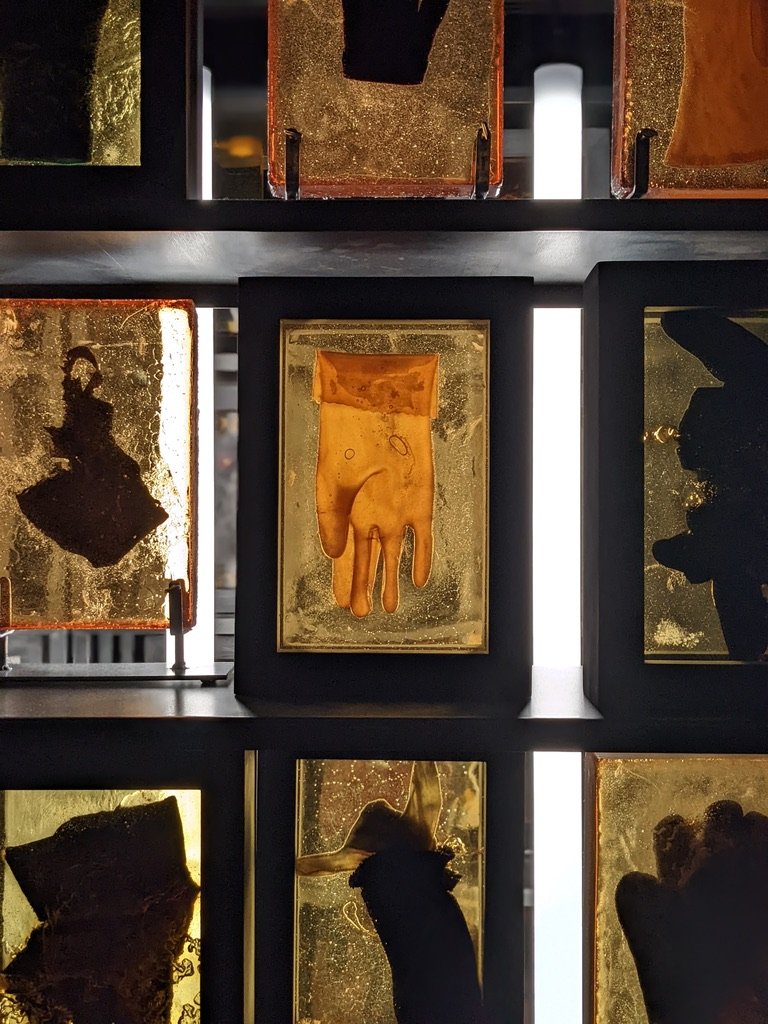
Nick Cave, Truss (detail), 1999, mixed media including metal, resin, and gloves.
Photo by Renée DeVoe Mertz.

Nick Cave, (background) Wall Tapestry, 2015, mixed media including found beaded and sequined garments;
(foreground) Untitled, 2018, mixed media including table, carved eagle, and 119 various wooden heads.
Photo by Renée DeVoe Mertz.
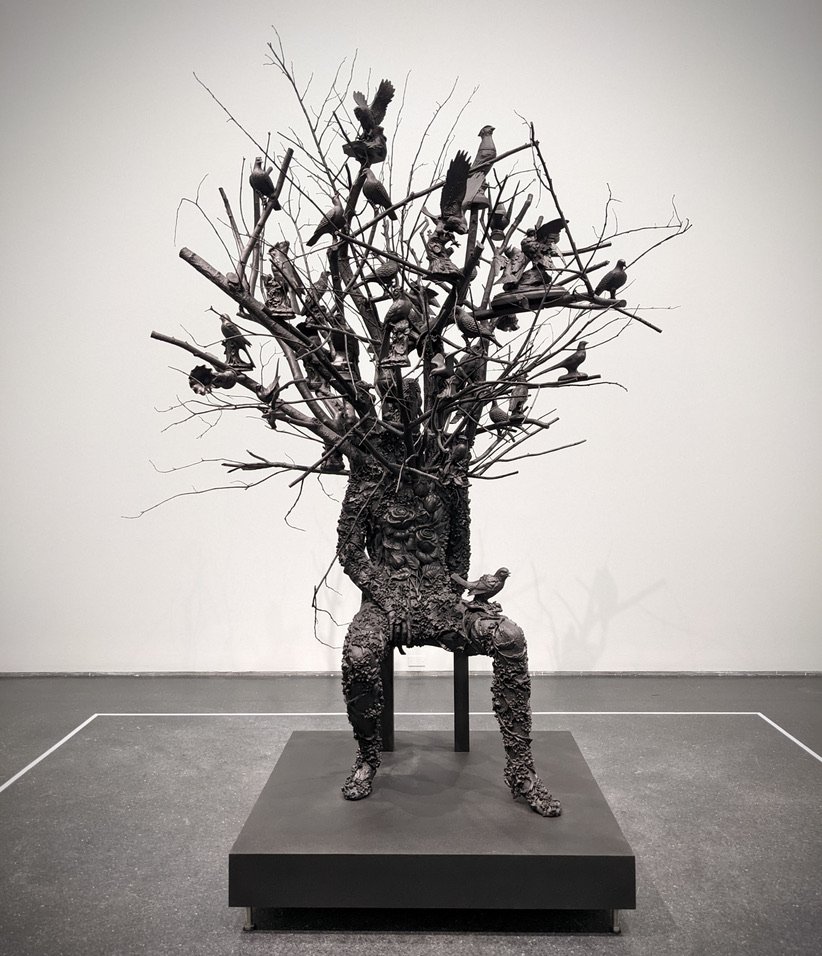
Nick Cave, A·mal·gam, 2021, bronze.
Photo by Renée DeVoe Mertz.
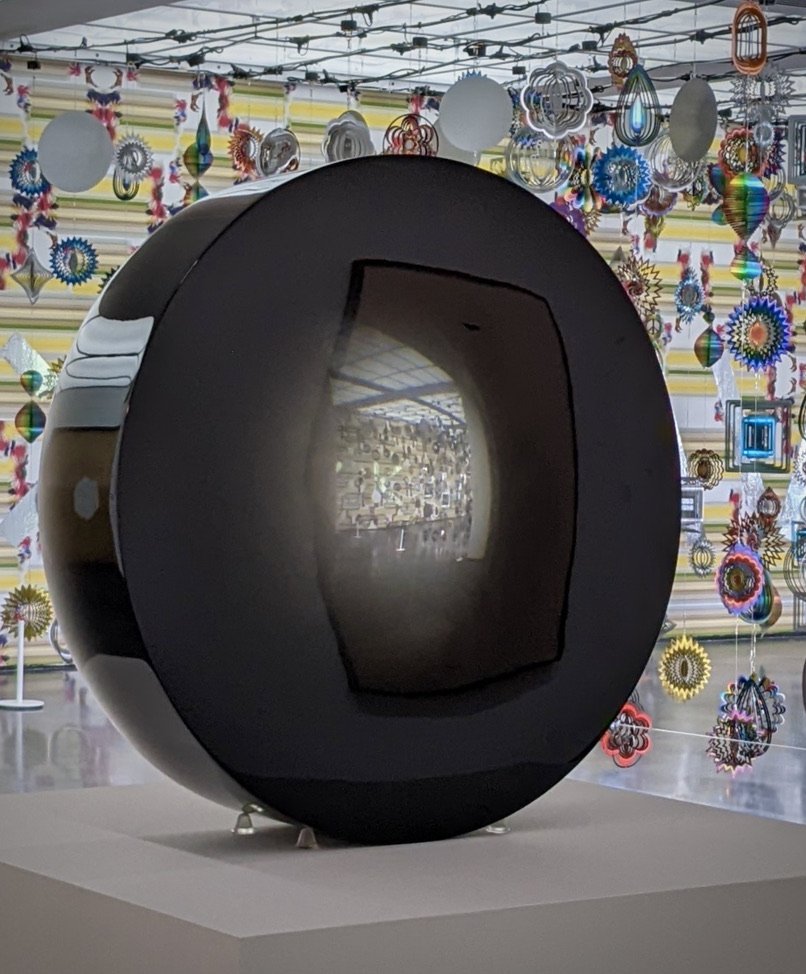
View of Nick Cave’s Spinner Forest, 2020, through Fred Eversley’s Untitled (parabolic lens), 1974, cast polyester.
Photo by Renée DeVoe Mertz.
Nick Cave: Forothermore was on display at the Museum of Contemporary Art Chicago May 14–October 2, 2022.

